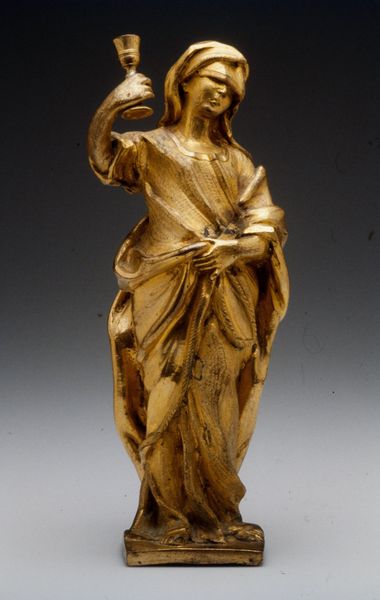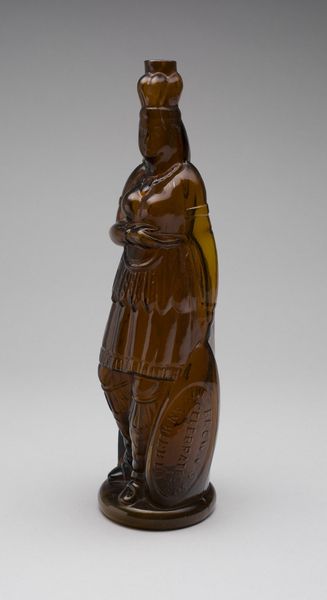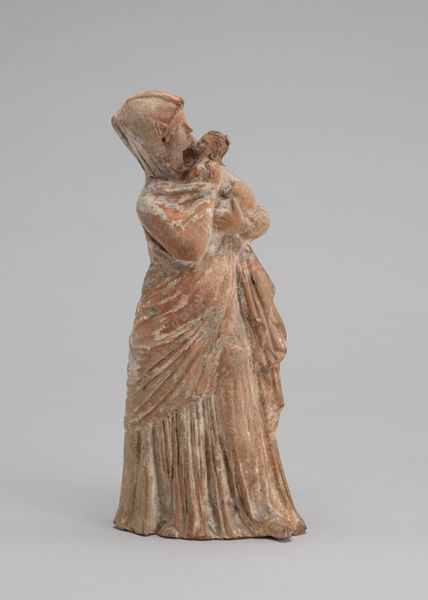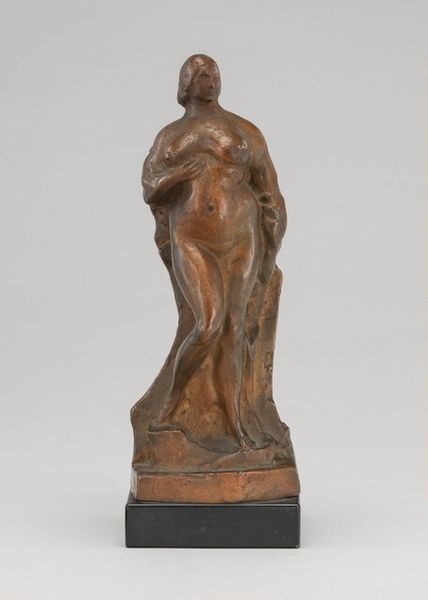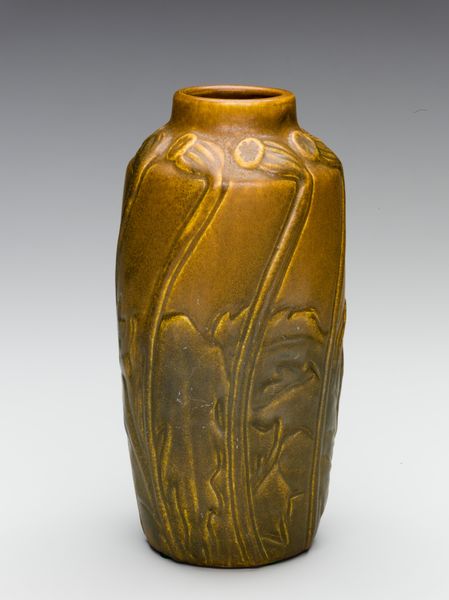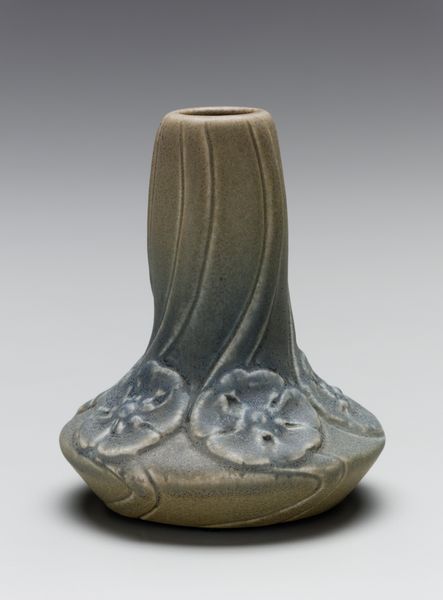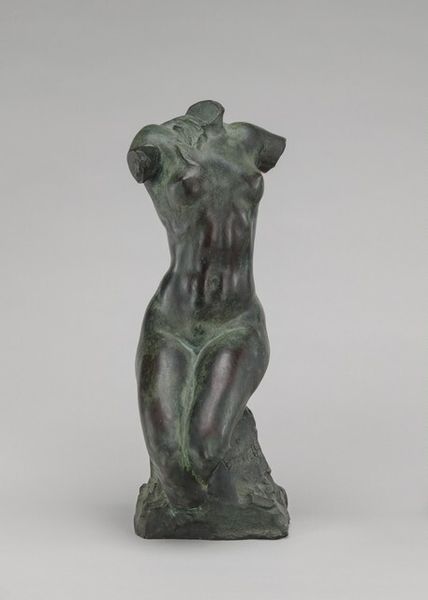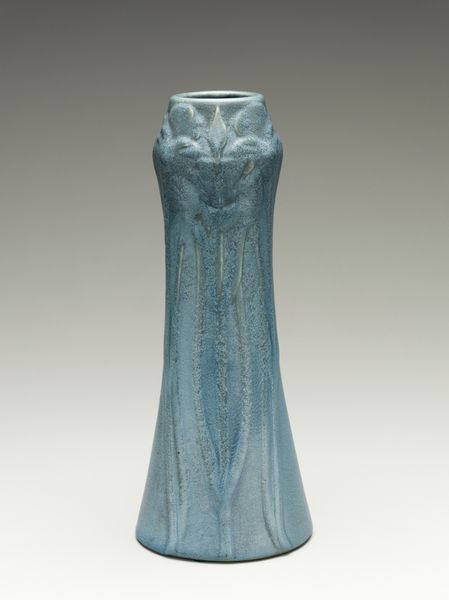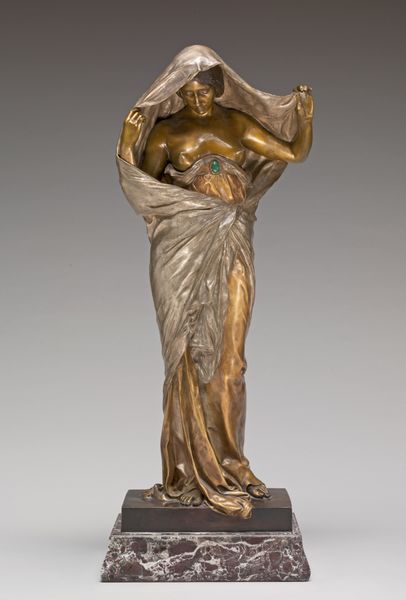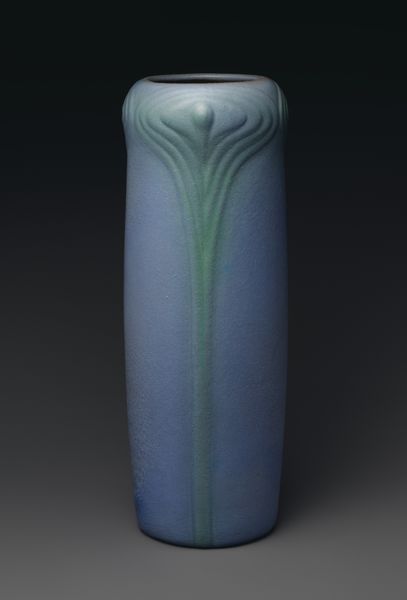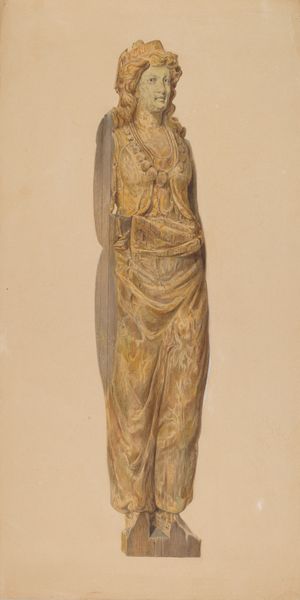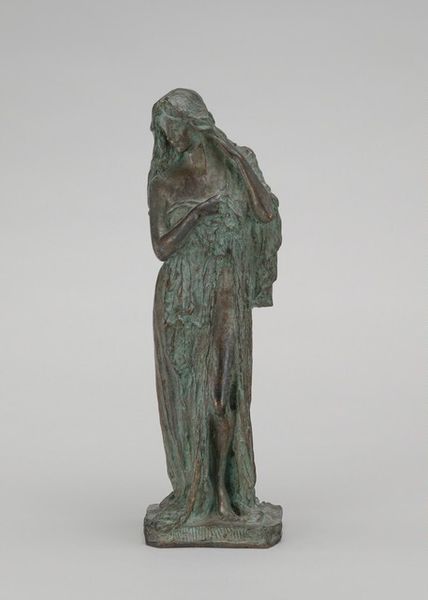
ceramic, sculpture
#
organic
#
art-nouveau
#
ceramic
#
form
#
sculpture
#
united-states
#
decorative-art
Dimensions: H. 10 3/4 in.
Copyright: Public Domain
Editor: This ceramic vase, entitled "Vase with Daffodils," was crafted in 1902 by Artus Van Briggle. Its subdued green palette gives it a really organic, almost understated elegance. What do you see when you look at this piece? Curator: I see a potent symbol of the Art Nouveau movement's broader project: challenging the rigid boundaries between art and life, object and environment. The daffodils aren’t just decorative; they’re integrated structurally, almost anthropomorphized. Do you see how the plant forms seem to writhe and almost embrace the vase? Editor: I do. It almost seems as if the vase is also growing? It gives a strong sense of constant evolution. Curator: Exactly! And thinking intersectionally, how might we interpret this emphasis on fluidity and organicism? Art Nouveau coincided with shifts in gender roles and the questioning of Victorian social structures. Consider how the intertwining, almost ambiguous forms challenge fixed categories. Is there a parallel, do you think? Editor: That's fascinating! It does make me wonder if the artist was subtly critiquing societal constraints through these unconventional forms, kind of blurring the lines of established norms. Curator: Precisely! Van Briggle may have been using the natural world not just for aesthetic inspiration, but to mirror or perhaps even advocate for a more liberated social landscape. It pushes us to reflect on how art can be a visual argument. Editor: I never thought of a vase being so subversive. It really gives you a new appreciation to see something decorative from such an unexpected point of view. Curator: Absolutely. The power of art is truly revealed when we use it to engage with our society’s intricacies.
Comments
No comments
Be the first to comment and join the conversation on the ultimate creative platform.
